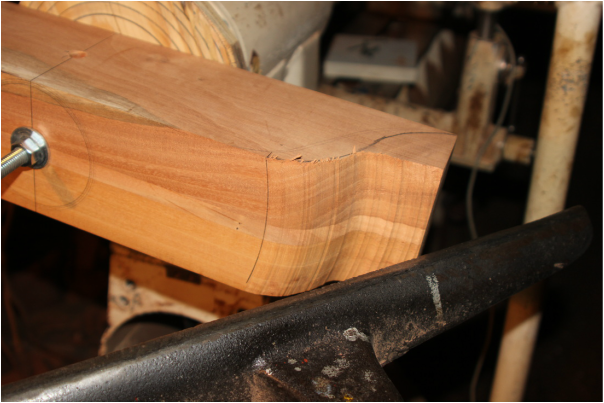Face Turning
Although I hope that my work will turn your head,
that's not what I mean by "face turning".
Look below
In the mid to late 80's while making natural edge turnings the thought occurred to me to use a strobe light to illuminate the irregularly shaped pieces of burl wood I favored at the time. A bit of experiment and research led me to an industrial strobe light which could be connected to my lathe with a photo-electric eye which allowed the light to flash once per revolution at exactly the same point. This produces a stationary image of the spinning object, or, to put it another way, it looks like it's not moving at all. I wrote an article about this technique for Fine Woodworking Magazine, issue #73, December 1988. Since then the technique has been a regular part of my repertoire, assisting me immensely in making "winged vessels" (in the Lidded Vessel gallery) or some of the "interactive sculptures". Eventually this led me to what I am calling "face turning', in which a longish piece of wood is spun like a propeller on the lathe and one of its four faces can be shaped with various lathe chisels. The wood is rotated in its mounting to allow each face to be shaped, creating an unusual looking turned object. Cutting that object in half produces two identically shaped elements, which I then combine with other similarly derived shapes into an overall sculpture.
In the left hand image above you can see the strobe light on a tripod; the right hand image shows the line drawn on the wood indicating where cutting will stop. Unscrewing the nut on the bolt allows the wood to be rotated to access a new face for further shaping. (This technique is not for the faint hearted.) The piece in these photos produced the two elements on either side of the center element in the sculpture shown below.

"Pointing to the One" (in process) 2012

